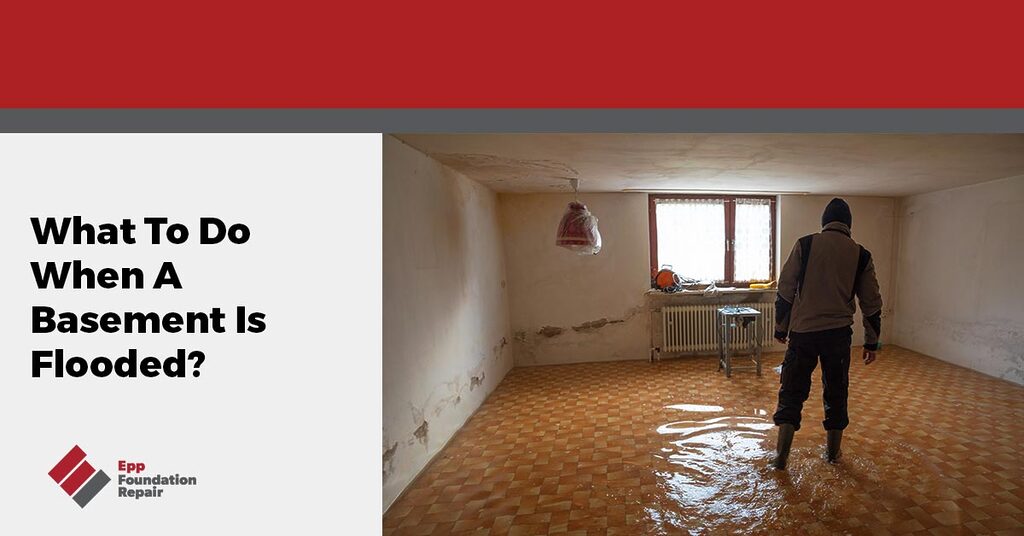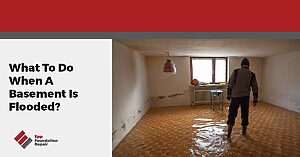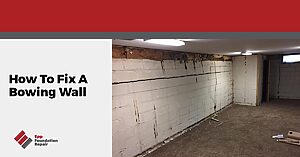A flooded basement can be an overwhelming and stressful experience for any homeowner. Whether from heavy rainfall, a burst pipe, or an unexpected plumbing issue, the sight of standing water seeping into your basement calls for immediate action and a clear plan.
In this blog post, we’ll explain the essential steps to take when dealing with a basement flood. From prioritizing your safety to efficiently removing the water and preventing future floods, we’ll share expert tips to help you manage this difficult situation.
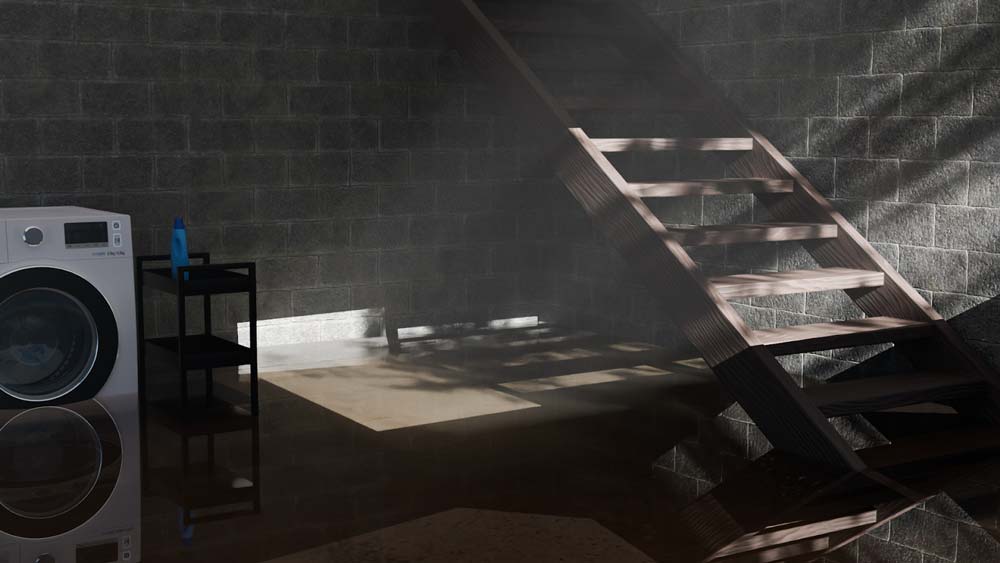
What Causes Basement Flooding?
According to the Federal Emergency Management Agency, basements are areas of a building with floors below ground level on all sides. Since basements are one of the lowest areas in your home, it’s not surprising that they often experience moisture problems such as flooding since water always flows where gravity takes it, and in most cases, that’s down to the lowest areas.
So, what causes a basement to flood? Many factors can contribute to basement flooding, including:
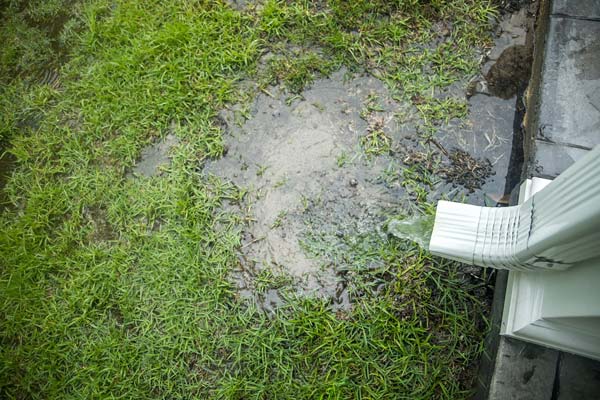
- Poor drainage systems: Inadequate drainage around the foundation can lead to water entering your basement.
- Heavy rainfall or rapid snowmelt: Large volumes of water can overwhelm drainage systems.
- Sump pump failure: When sump pumps fail, they can’t remove water, leading to basement flooding.
- Cracks in the foundation: Foundation cracks can allow water to seep into the basement.
- Backed-up sewers: Sewer backups can push water into the basement.
- Faulty or blocked gutters and downspouts: Improperly directed water can accumulate near the foundation and seep in.
Before: How To Prevent Basement Floods
Prevention is always the best and most affordable cure. Here are some steps you can take to minimize the risk of basement flooding:
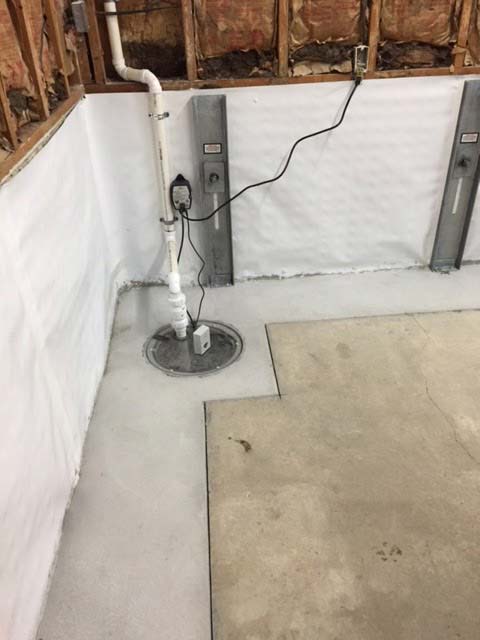
- Ensure Proper Drainage: Maintain gutters and downspouts by regularly cleaning out debris to allow for proper water flow. Make sure downspouts direct water away from the foundation. Grade your yard to ensure the ground slopes away from your home, directing rainwater away from the foundation. Clean up clogged drainage systems to ensure they are functioning optimally.
- Monitor The Weather: Stay informed about weather conditions, particularly during seasons prone to heavy rainfall or rapid snowmelt. This will allow you to take immediate action when necessary.
- Install a Sump Pump: Invest in a reliable sump pump, which can help keep your basement dry by pumping out accumulated water. Regular maintenance is crucial—check the pump regularly to ensure it’s in good working order, and consider a backup source of power to keep it running during power outages.
- Waterproof Your Basement: Consider both internal and external basement waterproofing methods. This might include using waterproof barriers and membranes to prevent water penetration and sealing visible cracks and holes with hydraulic cement or waterproof sealants.
- Install Drainage Systems: Consider installing French drain trench systems that redirect water away from the house. A drain tile system can also help direct water to a sump pump, protecting your basement from flooding.
- Regularly Maintain Plumbing Systems: Inspect your plumbing system for leaks or weaknesses and repair them promptly.
- Check For Cracks In Your Foundation: Regularly inspect your foundation for any cracks and seal them immediately to prevent water from seeping in.
- Remove Important Items From The Basement: Consider relocating essential and valuable items to higher ground. Store belongings in plastic bins rather than cardboard boxes to protect them from potential water damage.
If you need help with basement waterproofing and drainage solutions, our expert team at Epp Foundation Repair is ready to prepare your basement for any moisture problem. Click the link to see the areas we currently serve.
During: What To Do When A Basement Is Flooded
Sometimes, flooding in your basement may become inevitable. If it happens, here are some steps you can take to minimize the damage and keep your family safe:
Safety First
- Turn Off Electricity: Before entering the flooded area, turn off the electricity in the basement to avoid the risk of electrocution. If the breaker box is in the basement and you can’t reach it safely, contact an electrician for assistance.
- Wear Protective Gear: Use waterproof boots, gloves, and, if possible, a mask to protect yourself from potentially contaminated water, which might contain harmful bacteria or chemicals.
Identify The Flood Source
- Determine the Source: Identify whether the floodwater comes from internal sources like a burst pipe or external sources like heavy rain.
- Shut Off Water Supply: If it’s a plumbing issue, shut off the main valve to stop further water ingress. For external sources, try to redirect the water flow away from your home using barriers or trenches.
Call Your Insurance Company
- Take Photos and Videos: Document the extent of the damage for insurance purposes. Capture images and video footage of the flooded area, including water levels and damaged belongings.
- List Damaged Items: List all damaged items and their approximate value to assist in the claims process.
- Notify Your Insurer: Contact your insurance provider immediately to report the flood and initiate the claim process. Provide them with the documentation you’ve gathered.
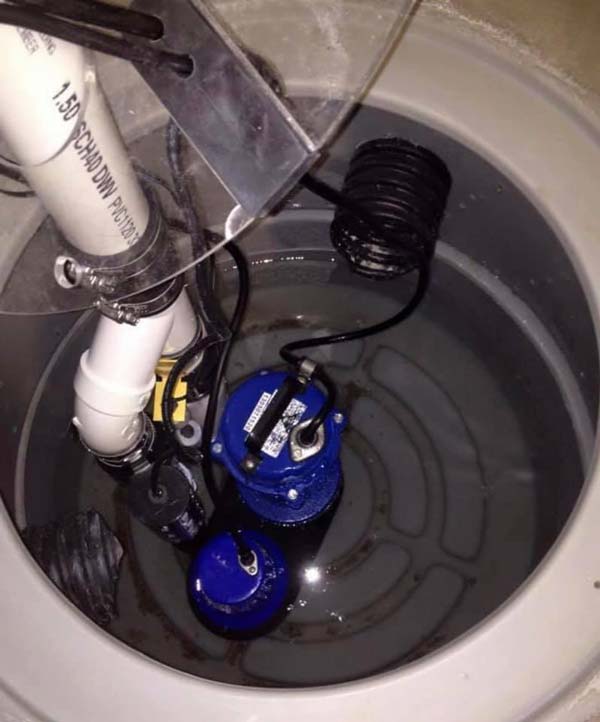
Pump Out The Water
- Use a Sump Pump: If you own a sump pump, use it to remove as much water as possible. Monitor its operation to make sure it’s working correctly.
- Wet/Dry Vacuum: For less severe flooding, you can utilize a wet or dry vacuum to suck up smaller amounts of water.
- Manual Removal: If pumping isn’t an option, use buckets and mops to remove the standing water manually.
After: How To Clean Your Basement After It Floods
Once the immediate crisis is over and the water has been removed, cleaning and restoring your basement is essential to prevent long-term damage and health hazards.
Follow these steps for an effective post-flood cleanup:
- Ensure Safety First: Firstly, check the structural integrity of the basement. Before re-entering, ensure that the structure is safe. Wear protective gear like waterproof boots, gloves, and a mask to protect yourself from contaminants.
- Dry the Wet Basement: Improve airflow by opening windows and doors to facilitate air circulation. Utilize fans and dehumidifiers to remove moisture from the air and basement surfaces. Take out wet carpets, rugs, and upholstered furniture.
- Remove Damaged Items: Sort items and dispose of those that can’t be salvaged. It’s advisable to consult local guidelines for disposing of large items or materials contaminated by floodwater. Additionally, keep photos of items you throw away for insurance claims.
- Clean and Sanitize: Use clean water and soap to scrub all surfaces, including walls, floors, and any hard surfaces that may have been contaminated. To disinfect, apply a solution of one cup of bleach per gallon of water to these surfaces. Handle bleach cautiously and avoid mixing it with other cleaning products.
- Increase Air Circulation: Enhance ventilation by using fans and dehumidifiers to speed up drying. Monitor the drying process continuously and keep the fans and dehumidifiers running until the basement is completely dry.
- Prevent Mold Growth: Dry everything as quickly as possible, as mold can start to grow within 24-48 hours. Apply mold inhibitors to surfaces that were in contact with floodwater to prevent future mold growth.
- Inspect Basement Damage and Problems: Look for structural damage by inspecting the foundation, walls, and flooring for cracks or other signs of structural issues. Ensure that all electrical systems and outlets are safe. Consider having a professional inspect these systems for safety.
- Call the Appropriate Contractor To Repair the Damages: Hire professionals specializing in water damage restoration and home repair. Engage specialized contractors for specific repairs, such as electricians for electrical systems, plumbers for plumbing issues, and HVAC specialists for heating and cooling systems.
Call Epp Foundation Repair For Basement And Foundation Services
Apart from essential home systems, you should also have your basement and foundation checked by a professional. If you have water damage in your basement or foundation, it’s important to repair it immediately.
Epp Foundation Repair offers various services for homeowners needing help with their basements and foundations. We can help you with everything from waterproofing to foundation repair.
Don’t let basement flooding create more issues for your home. Contact Epp Foundation Repair to provide the basement services you need.

